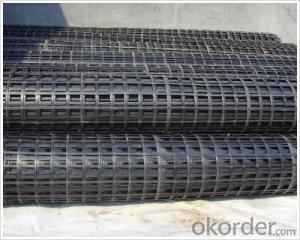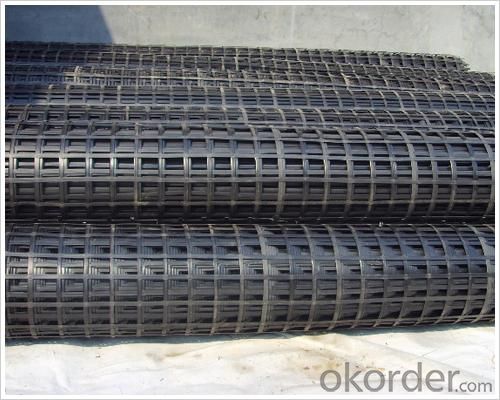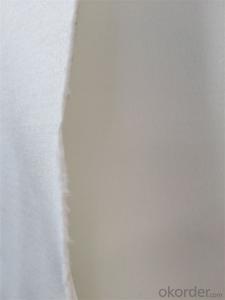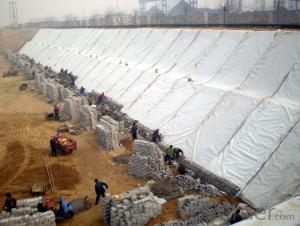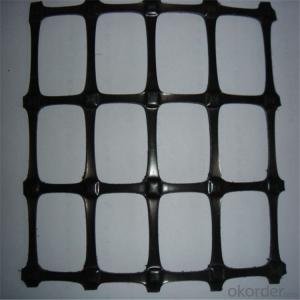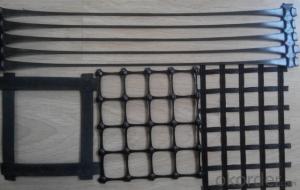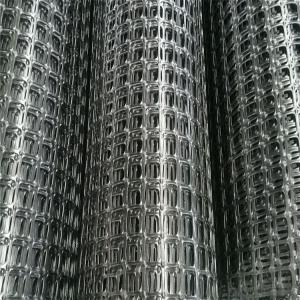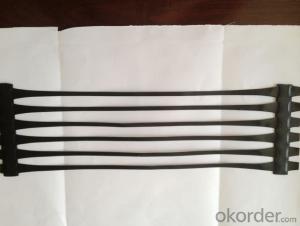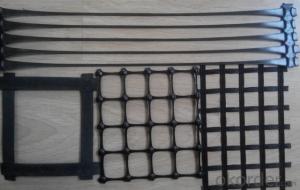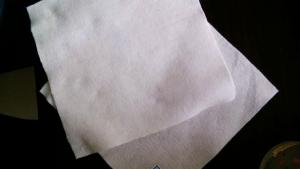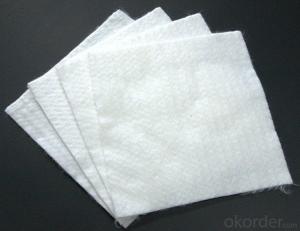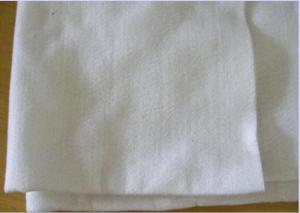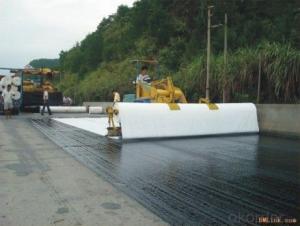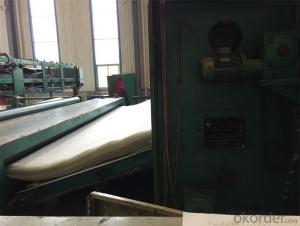PP Biaxial Geogrid Tensile Structure with Geotextile Layer
- Loading Port:
- China Main Port
- Payment Terms:
- TT OR LC
- Min Order Qty:
- -
- Supply Capability:
- -
OKorder Service Pledge
OKorder Financial Service
You Might Also Like
Packaging & Delivery
| Packaging Detail: | Standard export packing or according to customer requirements |
| Delivery Detail: | Within 10-15 days |
Specifications
different shape biaxial geogrid
Tensile strength: 15~40KN/M
Elongation ratio: vertical 16%,horiz-ontal 13%
Width: 1-6m
tensile structure used pp biaxial geogrid
Description
Biaxial geogrid is made of polypropylene through extrusion, forming and punching
before longitudinal and lateral stretching.
Application
1. Increase the bearing capacity of foundation, prolong the service life of road foundation.
2. Prevent the road (to) surface subsidence or cracking, keep the floor clean and beautiful.
3. The construction is convenient, time-saving, labor-saving, shorten the construction period,
reduce the cost of repair.
4. Prevent culvert crack.
5. Enhance the soil, preventing soil erosion.
6. Reduce the thickness of cushion, save the cost.
7. The stability of slope greening environment support grass mat.
8. Can replace the metal mesh, used for coal mine false roof net.
Specification
Speification | TGSG1515 | TGSG2020 | TGSG2525 | TGSG3030 | TGSG3535 | TGSG4040 | TGSG4545 | TGSG5050 |
width(m) | 2.5 or3 or 5 or 6 | |||||||
Longitudinal/Transverse Tensile Strength ≥(KN/m) | 15 | 20 | 25 | 30 | 35 | 40 | 45 | 50 |
Longitudinal Elongation≤(%) | 15 | |||||||
Transverse Elongation≤(%) | 13 | |||||||
Transverse Strength at 2% Strain ≥(KN/m) | 5 | 7 | 9 | 10.5 | 12 | 14 | 16 | 17.5 |
Longitudinal Strength at 5% Strain (KN/m) | 7 | 14 | 17 | 21 | 24 | 28 | 32 | 35 |
- Q: Geotextile lap joint with special equipment? How is the price
- Geotextile stitching is a professional equipment, professional equipment name for the portable sewing machine, the price is cheaper, generally ranging from 100-300 yuan. Look like this:
- Q: How do geotextiles help with load distribution in bridge approach fills?
- Geotextiles help with load distribution in bridge approach fills by acting as a separator and stress reliever. They prevent the mixing of different soil layers, reducing the potential for differential settlement and allowing for uniform load distribution. Additionally, geotextiles help to reinforce the soil, improving its overall strength and stability, which ultimately enhances the load-bearing capacity of the bridge approach fill.
- Q: What are the advantages of using geotextiles in storm surge protection systems?
- Geotextiles offer several advantages when used in storm surge protection systems. Firstly, they provide excellent erosion control by preventing soil movement and maintaining the stability of the protective barrier. Additionally, geotextiles act as a filter, allowing water to pass through while trapping sediment and preventing clogging of drainage systems. Moreover, these materials enhance the overall strength and durability of storm surge barriers, reducing the risk of damage during extreme weather events. Lastly, geotextiles can be easily installed and are cost-effective compared to other traditional methods of storm surge protection.
- Q: Geotextile packaging what are the requirements
- Geotextile packaging requirements are as follows: 1, staple acupuncture non-woven geotextile according to set into a long volume of packaging. The fixed length shall be determined in accordance with the product specification or the parties concerned. 2, the product of the splicing rate should be less than 15%, the total length of each piece of stitching products should be 7.1.1 fixed length plus 1m or more, every 100m to allow splicing 2, or by the supply and demand sides to determine. 3, the length of the product in the 30m below a small package can be a separate package, for a head treatment, 4, product packaging should ensure that no scattered, no damage, no pollution. Users have special requirements, the supply and demand sides to determine the consultation.
- Q: Concrete platform this time to water conservation?
- You say this is the road maintenance geotextile, is a one-time use, and its main role is to prevent the concrete quick-drying and the formation of cracks, the correct approach is that the concrete surface completely hardened before, to keep the geotextile moist, dry.
- Q: Geotextile mouth chain suture is what kind of picture
- Hello I am a professional geotextile and other geotextile materials,
- Q: What are the composite geomembranes suitable for use? What are the characteristics of it? There are several kinds of composite geotextiles?
- Water: reservoir seepage barrier seepage dam body slope, etc. Highway: road reinforcement, crack prevention and so on
- Q: Staple acupuncture non-woven geotextile is what material synthesis
- Using polyester staple fiber fineness of 6-12 denier, the length of 54-64mm polyester crimped short fiber as raw material. Polyester staple fiber is made of polyester (that is, polyethylene terephthalate, referred to as PET, from PTA and MEG polymerization) re-spinning into the fiber after cutting.
- Q: How do geotextiles help with soil stabilization in construction sites?
- Geotextiles help with soil stabilization in construction sites by providing reinforcement and separation between different soil layers. They act as a barrier, preventing the mixing of different soil layers, which helps maintain the stability and strength of the soil. Additionally, geotextiles distribute the load evenly across the construction site, reducing the potential for soil erosion and settling.
- Q: In the cofferdam construction process, geotextile materials after entering the need to arrange sampling test? Is there a specification? If the arrangements for testing, is to do physical experiments, or do chemical experiments, or do? More
- Physical experiments,
Send your message to us
PP Biaxial Geogrid Tensile Structure with Geotextile Layer
- Loading Port:
- China Main Port
- Payment Terms:
- TT OR LC
- Min Order Qty:
- -
- Supply Capability:
- -
OKorder Service Pledge
OKorder Financial Service
Similar products
Hot products
Hot Searches
Related keywords
